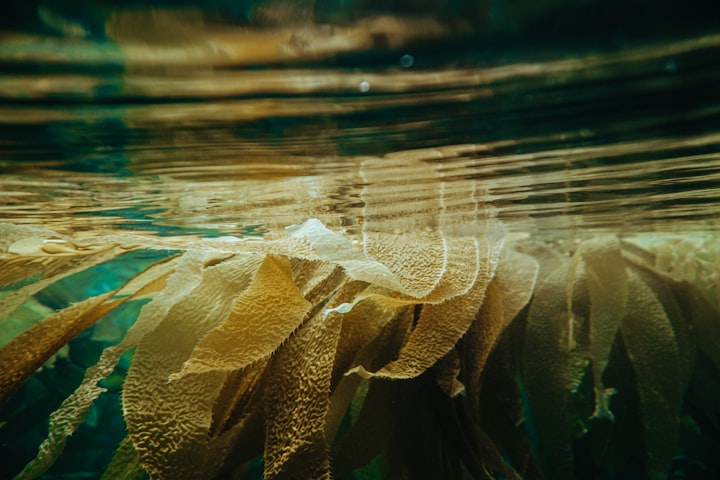Horseshoe Crab Blood & COVID-19
How 500,000 crabs are being harvested and drained of blood in the fight to find a coronavirus vaccine.

A Horseshoe crab is a marine arthropod. Contrary to their name, they are not crabs at all. The Horseshoe crab is more closely related to spiders than they are crabs.
Horseshoe crabs have been around for melena and are considered living fossils. Their design has gone under relatively few changes in the past few million years.

So what is their relevance to the current pandemic, you might be thinking? The answer to that can be found in their blood.
The Horseshoe crab is somewhat of a miraculous thing in the medical industry. Its blood is blue, which holds major medicinal benefits for our species when dealing with vaccine contamination control. Which is crucial in our managing of pandemics such as the one we find ourselves in today.

So what's so good about their blood? Unlike us, Horseshoe crabs use hemocyanin to carry oxygen through their blood, and because of the copper present in hemocyanin, their blood is blue.
This blue blood results in amoebocytes, which play a similar role as our white blood cells do in defending against pathogens. These amoebocytes are used to make Limulus amoebocyte lysata (LAL), which is used to detect bacterial endotoxins in healthcare applications (vaccines, treatments, medicine etc.).
LAL acts as a natural test for purity when considering approving a medical solution for injection into the human body. Stock solutions of medicine are infused with LAL, which quickly acts as a clotting agent and binds any harmful microbial by-products and endotoxins within a solution to be easily removed.
This prevents toxins from entering the manufacturing process and prevents us from exposure to harmful by-products when injected with a vaccine.

It's not just the Horseshoe crab blood that's important to us. It's also their place within the food chain and their role in the marine ecosystem on the Eastern United States seaboard.
They also serve as good bait for commercial eel and conch fisheries, which are massive contributors to the coastal eastern US economy.
As fantastic as Horseshoe crab blood is to our species. Its use in our vaccines comes at a high cost, and Horseshoe crabs are constantly under assault.

In laboratory settings, to harvest the blood for vaccines, an estimated 50,000 crabs die during the process, which comes in at anywhere between 3-30% of individuals when approximately 500,000 individuals are drained of their blood each year.
It's widely understood that those that survive the blood harvesting process are returned to the ocean. Yet, there is a growing scepticism amongst the scientific community that certain companies are instead selling the crabs as fishing bait to compensate costs for lower yields being brought in yearly.

As a result of overfishing, pollution, and habitat loss (coastal development), Horseshoe crab populations are seeing rapid declines.
This decline is only going to get worse as the demand for vaccines increases. Given that we're currently in the middle of a pandemic, a working vaccine is yet to be created. Demand is sky-high on a global scale. This surge in demand could result in catastrophic damages to Horseshoe crab breeding populations across the eastern USA as a vaccine for COVID-19 is sought after.
Companies currently harvesting Horseshoe crabs have said that the supply of crabs in the ocean is up to the task of accommodating the vaccine testing for COVID-19. Yet industry-specific information on the number of individuals needed is lacking transparency.

However, there is hope that a synthetic alternative to LAL called recombinant Factor C (rFC) has promising results for Horseshoe population numbers. rFC acts the same as LAL, but it's synthetic in origin, meaning Horseshoe crabs don't need to be harvested for their blood, resulting in no deaths.
The only issue is that pharmaceutical groups across the USA, like medical standards group U.S. Pharmacopeia (USP), fail to list this synthetic alternative rFC alongside the tried and tested LAL. This is because rFC requires more testing, and the current LAL has a 30-year track record for safety and success.
This comes as a blow to the industry and Horseshoe crab populations. Yet contrary to the USP ruling, rFC has been approved by the E.U. for widespread use across Europe by the European Pharmacopeia.
This means that for now, at least, LAL derived from Horseshoe crab blood will be used in the search for a COVID-19 vaccine in the U.S. Yet for the E.U., research into a COVID vaccine will use the synthetic alternative, rFC. Resulting in a reduction of Horseshoe crab deaths.
About the Creator
Bradley Knight
Grown on the British Isles, exploring beyond.
Marine Ecologist by trade, Scientific Illustrator and Communicator by hobby.






Comments
There are no comments for this story
Be the first to respond and start the conversation.